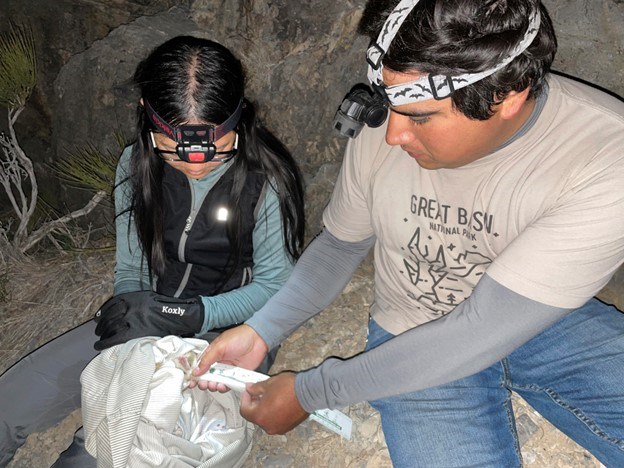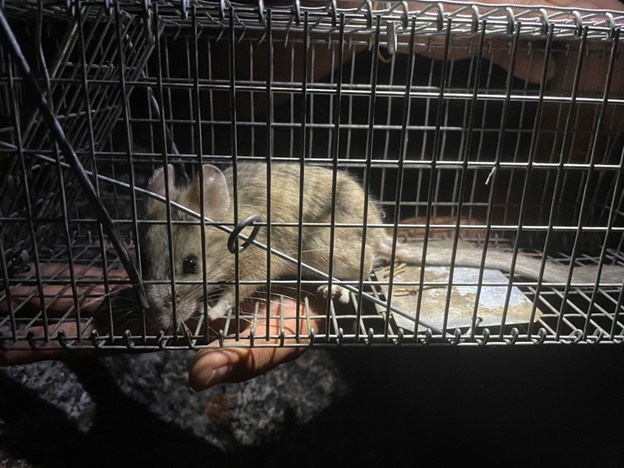Part of a series of articles titled The Midden - Great Basin National Park: Vol. 23, No. 1, Summer 2023.
Article
Understanding Woodrat Distribution
This article was originally published in the Summer 2023 issue of The Midden, Issue 23, Volume 1.

Ally Coconis
We are working to identify the causes and consequences of niche partitioning between two woodrat species, whose ranges overlap in Great Basin National Park. In other words, we would like to know why woodrats live where they do, and what resources they need to sustain their populations. To help answer these questions, we are combining field sampling and lab work at University of Nevada-Reno (UNR) to identify where woodrats live and what they eat.
During last summer’s field season, our research group surveyed along elevational gradients in Great Basin National Park. We searched for the presence of two woodrat species – Desert Woodrat (Neotoma lepida) and Bushy-tailed Woodrat (Neotoma cinerea). We used live traps to capture woodrats. Once trapped, we can gently handle the woodrats to measure them, identify if they are male or female, and whether they are very young or already an adult. We collect a small piece of their ear to provide a DNA sample and fecal pellets which allows us to measure what they are eating (from the DNA of the plants in their poop!). Finally, we ear-tag the woodrat with a unique number (looks like an earring), so that we know who they are if we catch them again.

Ally Coconis
In addition, we conducted plant surveys using line-point intercept and belt transects at 130 sites where we captured a woodrat. These will be used to understand what vegetation woodrats choose to build their nests near and which plants they choose to eat, among those that are available.

Ally Coconis
We plan to continue our fieldwork in 2023, trapping additional locations. We will also measure internal and external nest temperatures throughout the season as thermal properties are likely an important aspect of where woodrats choose to build their nests.
Last updated: June 20, 2023
